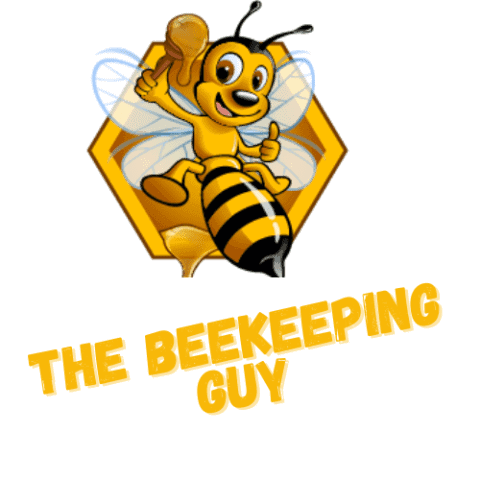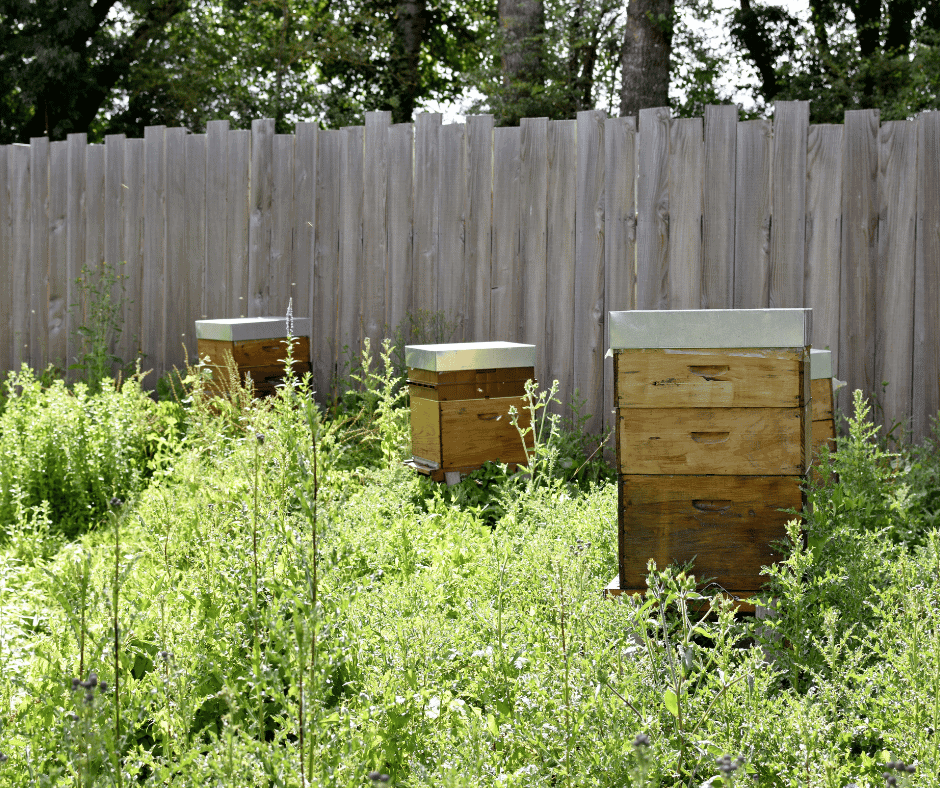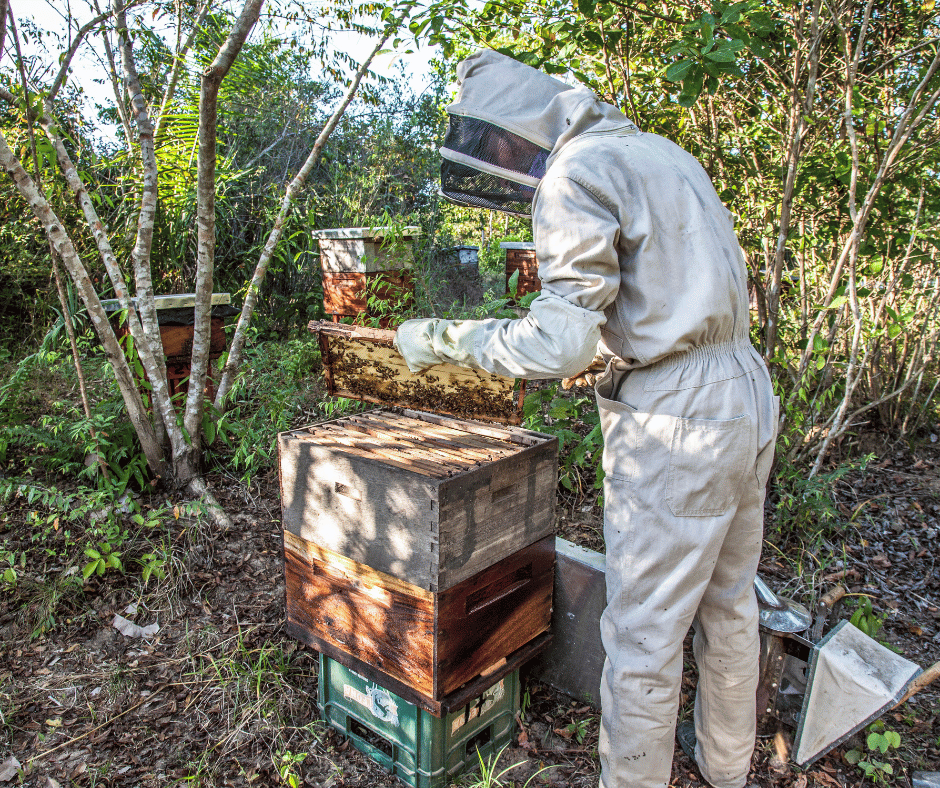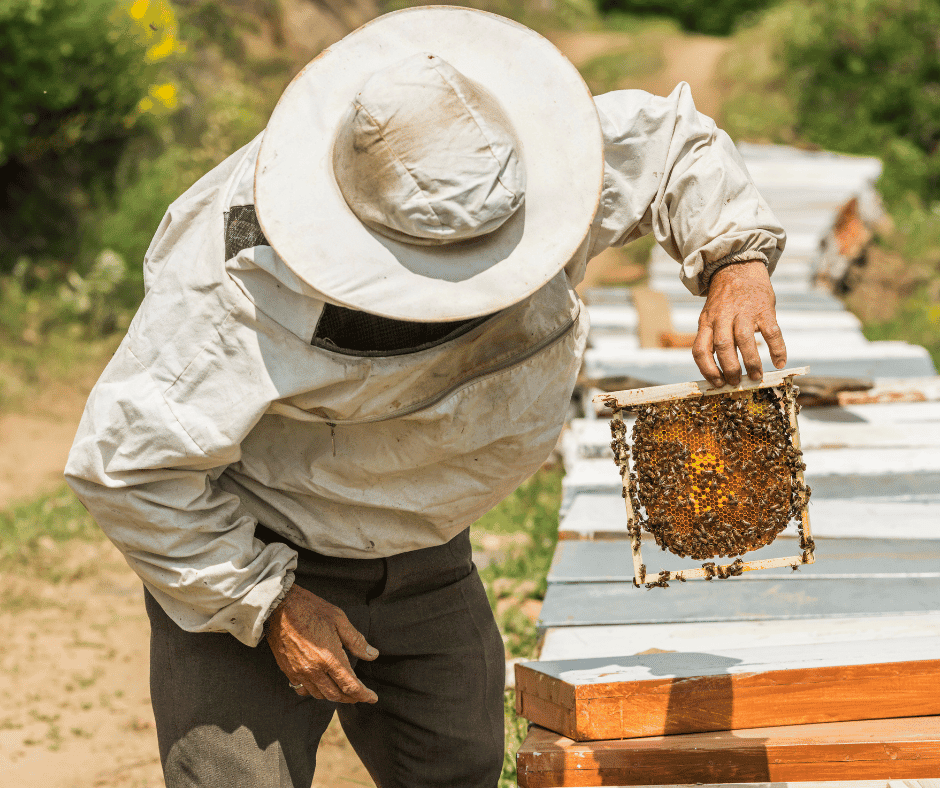
Honey is a valuable resource that has been used in many cultures throughout the world for centuries. Not only does it have an incredible range of culinary and medicinal uses, but it also plays a vital role in pollination and sustaining healthy ecosystems.
But what happens to honey if we don’t harvest it?
Well, it’s not recommended. Yes, unharvested honey can serve as a source of sustenance for the colony during the chilly winter months, with surplus amounts being stored for future use. But it also takes up valuable space which is not only needed to store the extra honey being made but also space needed for the queen to lay her eggs.
In this article, we’ll explore how harvesting honey directly impacts bee populations, ecosystems, and human health.
At its core, harvesting honey involves taking some of the sweet substance away from bees so that people can put it to use as an ingredient or medicine. This process requires careful attention to ensure there’s enough left over for the bees – otherwise, they won’t be able to survive!
We’ll discuss why proper harvest management is essential for preserving natural habitats and promoting human well-being.
Table of Contents
The Benefits Of Harvesting Honey

When it comes to harvesting honey from a beehive, there is an undeniable sense of mystery and awe in the process. It’s as if you have been given access to one of nature’s most sought-after treasures.
Harvesting honey then becomes essential in order to preserve this precious commodity while ensuring the health of the bees themselves. Knowing when to harvest honey is key; allowing them enough time before taking away some of what they’ve produced will allow bees not to starve or harm their population numbers over time.
Understanding how often you harvest honey, how it is harvested and its importance for both humans and bees is crucial for anyone looking into becoming a beekeeper. When done properly, harvesting honey from a beehive provides us with the opportunity to connect with nature in ways we never thought possible – all while contributing to our environment’s well-being!
With proper care and knowledge about harvesting honey, both people and bees benefit tremendously.
The Consequences Of Not Harvesting Honey
Harvesting honey is undeniably beneficial to beekeepers and the bees they keep. Without harvesting, however, there can be considerable consequences for both parties. Not only do bees need their honey stores to survive through cold winter months or times of food scarcity, but not harvesting honey can also have a negative effect on entire colonies of bees.
Understanding these consequences starts with answering some key questions:
Do bees eat their own honey?
Absolutely! In fact, it’s essential for them to store enough energy reserves to make it through long days of pollinating flowers and other activities that help sustain our environment. Hive populations rely heavily on the availability of stored sugars within hives as well as nectar collected from flowers outside of the hive – if either source runs low, the colony could starve.
Does harvesting hurt them in any way?
The best time for beekeepers to collect harvested honey is when the colony has plentiful supplies in its storage cells, which are typically full around late spring/early summertime – this ensures that the colony will still have sufficient resources during less productive seasons.
While most commercial beekeepers use apiary equipment (smokers, frames) specifically designed for extracting excess stores without damaging the hive itself; collecting wild-harvested honey does require extra care so as not to disturb or disrupt local colonies too much (as an overabundance of disturbance could cause swarms).
And what about wild-harvested honey?
By understanding how and when to properly harvest honey – both commercially and wild-harvested – we can ensure that both beekeepers and their bees benefit equally from nature’s sweet gift. Through consciously limiting disturbances while allowing suitable access points into individual hives, we can support healthy colonies while delivering delicious products straight from mother nature’s kitchen table!
And with that in mind, in the next section, we take a look at the impact on bees and bee colonies due to improper harvesting practices or lack thereof.
The Impact On Bees And Bee Colonies
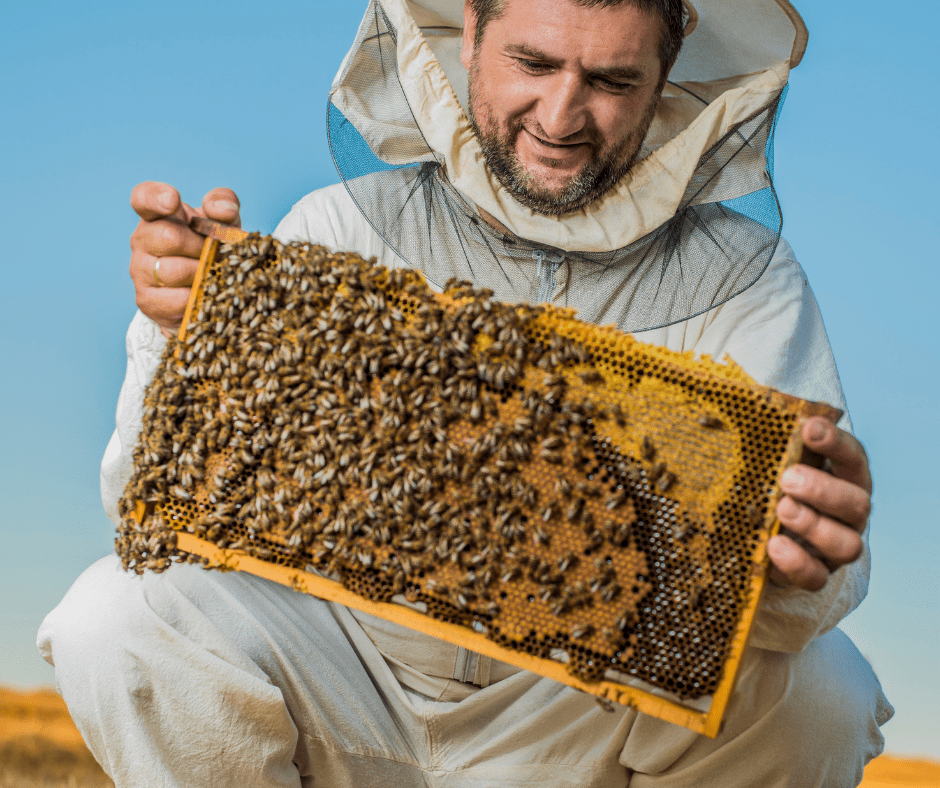
When honey is not harvested, bees don’t starve. They may have to work a bit harder for their food, but they will still be able to survive in the wild without harvesting honey from them.
In fact, some beekeepers even encourage wild honey harvest as it helps support local ecosystems and aids in the pollination of plants.
This is why sustainable and humane practices should always be used when harvesting wild honey and other bee products.
The Impact On The Environment
Honey is a precious resource, and it has been revered by humans for thousands of years. The process of harvesting honey from beehives is an age-old tradition, but what happens to all the extra honey if it isn’t harvested?
Well, bees actually make more honey than they need — far more. This surplus can help them survive when food sources are scarce or in winter months when there is no nectar available. There have been studies that suggest the bees do not eat their own stored honey; however, they will take what they need while leaving plenty behind. So, taking some of this excess honey does not hurt the bee population.
The impact on the environment then becomes clear: left unharvested, much of the surplus goes to waste as too much honey leads to fermentation and decay within the hive itself.
As such, careful harvesting helps protect hives from overcrowding and ensures that valuable resources don’t go unused or become ruined by spoilage.
In addition to preserving natural habitats for pollinators, maintaining healthy stores of honey also benefits human health through its many nutritional properties like vitamins and minerals – making it well worth our effort to preserve!
The Impact On Human Health
If honey is not harvested, it can have a major impact on the health of both humans and bees.
It’s important to understand that the honey produced by bees serves as their primary source of food and nutrition; do they eat honey or just make it? Without harvesting, the amount available for them to consume dwindles over time, leaving them vulnerable to starvation during winter months when flowers are scarce.
This could lead to an entire hive dying if there isn’t enough stored away from previous harvests.
Humans too benefit greatly from seasonal harvestings of honey.
If my bees died over winter and I’m unable to collect what was left behind, then I may miss out on some valuable nutrients found in raw unpasteurized honey.
How do you get honey anyway?

Harvesting generally involves using smoke to remove the bees from their combs before extracting the sweet liquid with a centrifuge machine – all taking place within a given window of time known as ‘the nectar flow’.
How long does it take to harvest honey?
The length of time it takes to harvest honey depends on several factors, including the size of the beehive, the strength of the colony, and the weather conditions. Generally, honey is harvested during the summer months when flowers are in bloom and nectar is abundant. It takes bees several weeks to collect enough nectar and convert it into honey. Once the honey frames are full, beekeepers will remove the frames and extract the honey using specialized equipment. The entire process can take anywhere from a few weeks to several months, depending on the factors mentioned above.
And how often do bees produce it?
The frequency at which bees produce honey varies depending on factors such as the weather, availability of nectar, and the strength of the colony. During peak honey production season, which is typically in the summer, bees can produce and store several pounds of honey per day. However, in cooler seasons or during times of drought, honey production may slow down or even stop altogether. The amount of honey produced also depends on the size and strength of the colony, as well as the species of bees. In general, bees will continue to produce honey as long as they have access to nectar and pollen from flowers.
How often should a beekeeper check the hive?

Beekeepers should check their hives regularly to ensure that the colony is healthy and productive. The frequency of hive checks can vary depending on factors such as the time of year, the strength of the colony, and the beekeeper’s level of experience. During the peak honey production season, which is typically in the summer, beekeepers may check their hives once a week or more. In cooler months or during times of low honey production, hive checks may be less frequent, such as every two to three weeks. However, it is important for beekeepers to monitor their hives regularly and be aware of any signs of disease or pests that could harm the colony.
The Necessity Of Seasonal Harvesting
The previous section discussed the impact of honey on human health, but what about the bees who produce this sweet nectar? If we don’t harvest honey from our buzzing friends, it can have a devastating effect.
It’s truly heartbreaking to think that without proper harvesting practices, these hardworking creatures may be deprived of their best-laid plans for survival.
It is essential to understand how often and when you should collect honey in order to keep both humans and bees healthy. Although some beekeepers recommend collecting only once or twice a year, others suggest more frequent harvests every few months — particularly during times of drought or food shortage when other sources are scarce.
By understanding the importance of seasonal harvesting and employing sustainable beekeeping practices and techniques – like providing alternative sources of nutrition – we can ensure that neither we nor the bees ever go hungry!
Beekeeper Practices And Techniques
Harvesting honey is an important part of beekeeping, and as we have seen, not doing it can have serious implications for both the bees and the beekeeper.
If a beekeeper takes too much from their hive, the bees will be left with nothing to eat. This can lead to malnutrition, leaving them weak and vulnerable to disease.
Not only that but if there’s too much honey in the hive, it can also attract predators or pests who might try to steal it or even eat the bees themselves!
But harvesting honey doesn’t mean being cruel – there are sustainable beekeeping strategies that allow for regular harvests without harming any of the bees. Beekeepers need to make sure they’re monitoring their hives closely so that they know when enough honey has been produced before taking action.
By following these steps, we can ensure that our bees stay healthy while providing us with delicious, cruelty-free honey all year round. To accomplish this goal sustainably, let’s take a look at some of the most effective beekeeping practices and techniques available today.
Sustainable Beekeeping Strategies
An interesting statistic to consider is those beekeepers can take up to 80-90% of honey produced by their colonies and still leave enough for the bees. This means that when done properly, harvesting honey has a minimal impact on the health of the colony.
Sustainable beekeeping strategies include not harvesting honey from first-year hives; if we do choose to harvest, taking no more than 80-90%; feeding artificial nectar when necessary; and planting flowers near colonies with diverse sources of pollen.
Below are five key points about sustainable beekeeping:
- Can you harvest honey in the first year? It’s best not to so as to give the hive time to build up stores for winter.
- Bees left in a hive full of honey will usually eat it before venturing out for food, making them vulnerable to pests and disease.
- What do bees eat when we take their honey? They feed on nectar or syrup substitutes until they find natural sources of food such as flowers containing nectar or pollen.
- Is eating honey bad for bees? No, however overharvesting can be damaging to both wild and managed colonies alike.
- Is honey cruel? Not if harvested sustainably – this means leaving enough behind for the bees while ensuring they always have access to plenty of fresh water and other resources like clean wax combs.
Beekeepers who follow these guidelines ensure healthier colonies and better-tasting honey!
Conclusion
It’s clear that harvesting honey is an essential practice for a sustainable beekeeping operation.
Not only does it allow us to enjoy the sweet rewards of our hard work, but it also ensures that bees and their colonies are healthy and safe from harm.
Without proper harvesting techniques, the consequences could be devastating! The environment would suffer due to fewer pollinators, human health could decline without access to natural medicines like honey, and entire bee populations might be wiped out in extreme cases.
When we harvest honey responsibly and sustainably, we’re not just taking something from nature – we’re actually giving back by creating balance within fragile ecosystems.
So let’s all do our part to ensure that every drop of golden goodness is harvested with care!
